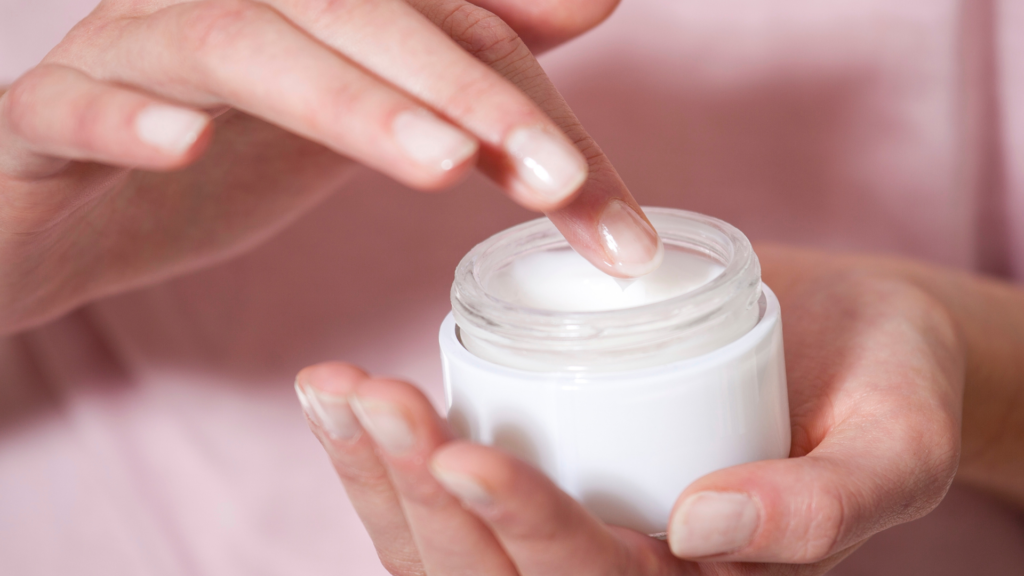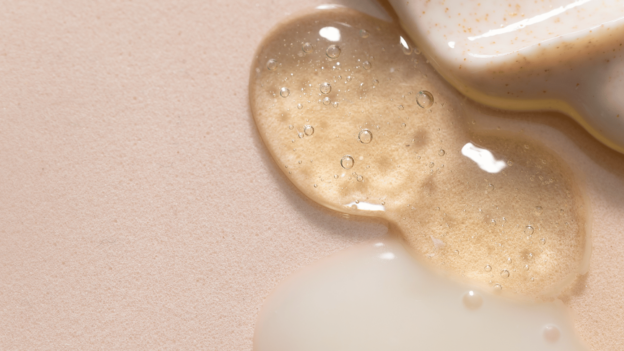An important and relatively new area of cosmetic products is the use of microbes (bacteria in particular) to bring beneficial effects. Because we are so often fighting against the presence of microbes in personal care products (due to the need for preservation and preventing the overgrowth of harmful bacteria), it might seem strange to consider actually using microbes in a new formula. However, our bodies are teeming with bacteria, including on our skin. It’s normal and healthy. If you have a skin disorder or are constantly removing bacteria from the skin (harsh cleaning, soaps, hand sanitizer, etc), it can throw off the normal balance of bacteria and lead to problems. For that reason, we sometimes turn to pre/pro/post-biotics.
A prebiotic is something that acts as food/nutrients for microbes. It doesn’t contain any actual microorganisms. Just like us, bacteria have needs that have to be met. A steady diet of water/starches/sugars/minerals allows the microbes to thrive. If these are not present on the skin, it can sometimes be difficult to maintain a healthy skin biome. As an example, consider honey. Honey is used in personal care products for its soothing and hydrating/moisturizing qualities. It can also act as a prebiotic because the microbes find it useful for growth. Some starches can also serve as nutrients for microbes, as well as minerals like iron. Applying these ingredients to the skin allows the microbes present on the skin to regrow to a healthy population.

The disadvantage to using prebiotics is that can make the products hard to preserve. We’re constantly fighting against the presence of microorganisms in cosmetics. It can be a safety concern, which is why we typically use strong preservatives. Having a mountain of microbe-food / growth nutrients in the product is like leaving the bank unguarded. Any chance a microbe has to grow in the product bottle, it will, and that includes harmful organisms. This can lead to spoilage and even possible safety issues if a harmful strain goes unchecked. Unless you are specifically designing a product for people whose natural skin biome has been disrupted, you should carefully consider whether the use of prebiotics in your products is something that should be embraced. Diluted honey, for example, can make some products virtually impossible to preserve.
Unlike prebiotics, probiotics are actually living microorganisms. Lactobacillus is pretty popular in cosmetics. We add “good” bacteria to the product and then the microbes are transferred onto the skin with use. This helps to repopulate the skin with friendly bacteria. There aren’t many manufacturers who use this approach. It’s quite far from the normal “kill all the microbes you can, make their life very difficult” attitude which is the standard. In 2020 there were about 250 products worldwide that used this approach. The use of probiotics in cosmetic formulations requires a deep understanding of microbiology to formulate successfully. I expect this is an area that will be an active area of research well into the future. There is a certain appeal to replacing the “good” bacteria and restoring the skin’s natural biome. This is an area of cosmetics that may remain niche for some time but I fully expect it to develop as we start to understand more about the role of micro-organisms in skin health.
A post-biotic is what’s left over after the microbe has eaten all the food. During the course of digesting the nutrients, the microbe releases compounds which can be harvested for use in cosmetics. Then, the manufacturer kills the microbes. The result is a fermented product, consisting of the remnants of the micro-organisms (so there are no viable microbes in the product to cause preservation problems). The remaining liquid contains the discarded leftovers and digestion products from the microbial action.
To give an example, consider honey. Honey can act as microbial food, so it’s a prebiotic. We can add this honey to water and yeast, the yeast being the probiotic. It’s a living organism. After the yeast digests the honey, it makes some of it into drinking alcohol. The honey-wine (mead) resulting from honey fermentation is the postbiotic; it came from the microbes during their course of digestion.
Post-biotics are currently the most important of these ingredient classes. A wide range of fermented ingredients exists for cosmetics, including preservatives/humectants / enzymatic activity / oxidative damage prevention/exfoliation. New products are steadily being released by firms such as Active Micro Technologies, which is one of the most important players in this area. Post-biotics are attractive for marketing reasons, as well as the unique molecular behavior that we would otherwise have a hard time accessing. Similar to probiotics, I see post-biotics becoming a much larger field in the near future. Our control of microbial genetics (guiding them to produce the products that we desire) is getting better every year, and it won’t be long before cosmetic formulators have a wide array of fermented products to use in their formulas.

